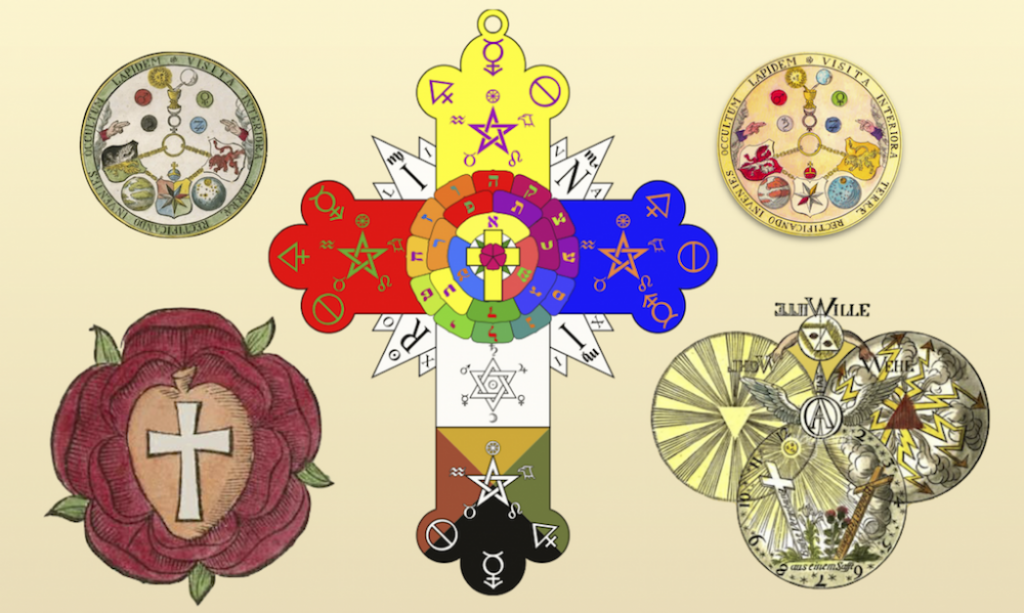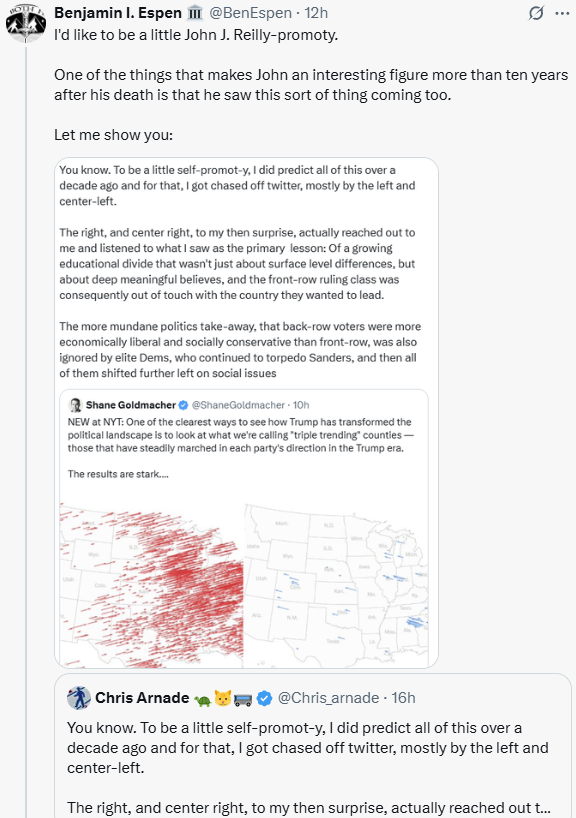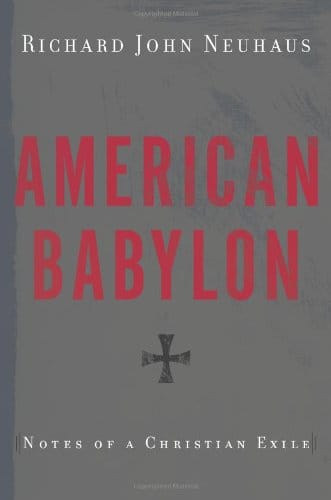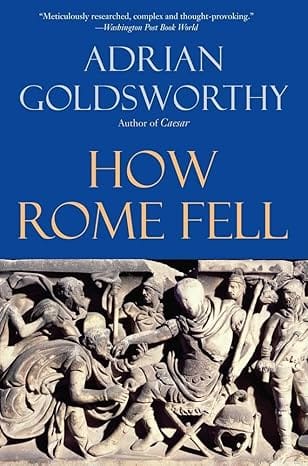The Long View: The Rosicrucian Enlightenment

Rosicrucians
The Rosicrucian Order is the kind of thing I couldn't get enough of when I was a teenager and a young man, and now bores me to tears. Accordingly, I'm sympathetic to John's critical reading of what the history of such movements really means.
The Rosicrucian Enlightenment
By Frances Yates
Routledge, 2004
(First Published 1972)
333 Pages, US$14.95
ISBN 0-415-26769-2
Did companies of English actors once prowl the capitals of western Germany and Mitteleuropa like Cathar troubadours, providing entertainment to the masses, to be sure, but also heralding to the wise a the impending arrival of an alchemical Millennium? And did the mind of modernity really spring from the Monas Hieroglyphica, John Dee’s dense and enigmatic little book, whose evangel Dee spread during his time in Europe in the 1580s, when he became a figure at the uncanny court of Holy Roman Emperor Rudolph II at Prague? To answer a flat “yes” to either of these questions would be to put the matter more crudely than it appears in this careful classic study of the Rosicrucian moment in European intellectual history. (And actually, in asking those questions, I put in the comparison to the troubadours myself, though the author does make much of the role of Elizabethan drama.) Conspiracy theorists cannot be greatly comforted by this book, since it deals in large part with a public if overambitious political project, though the book does touch on the origins of the Freemasons and the other not-particularly-secret societies that began to flourish in the 17th century. Be that as it may, the real theme of the work is that the origins of the culture of modern science are closely linked with millennialism and a form of neoplatonism.
The centerpiece of the story is brief reign of the Winter King and Queen of Bohemia: Frederick V (1596-1632), Prince-Elector of the Palatinate, and of Princess Elizabeth Stuart (1596-1662) of England. In 1619, the Kingdom of Bohemia rejected the Catholic Habsburg heir to the throne and chose the Protestant Frederick instead. His marriage in 1613 to Elizabeth, the daughter of James I of England, had been seen as a great strengthening of the Protestant cause in Europe. The offer of the Bohemian crown raised the possibility of a league of Evangelical princes that would break the hegemony of Habsburg and Spanish power. The supporters of the Bohemian project, as manifested in the literature of those years that purported to issue from an ancient but theretofore secret order of the “Rosy Cross,” also seem to have hoped that Frederick’s move from Heidelberg to Prague, the old capital of Rudolph II (1552-1612), might be the preliminary to Frederick’s ascension to the throne of the Holy Roman Empire (an elected position, remember: Frederick was one of the electors). Thus the connection between that ancient federation and the Church of Rome would be broken, and the empire would become the instrument, in the words of the Rosicrucian literature, of “a general reformation of the whole wide world.”
As it happened, few enterprises have ever turned out quite so badly. There had been a long truce in the wars of religion in the decades before the Bohemians chose Frederick. In those days, every state in Germany and Middle Europe seems to have been ruled by Ludwig the Mad, and the recluse Rudolph with his hermetic studies and keen interest in alchemy is usually denounced as the most frivolous of all. In retrospect, though, his absent-minded tolerance was probably the best course. His Habsburg successor (after the brief reign of his brother) refused to accept the loss of Bohemia to the Protestant cause (though it was largely a Protestant country). The Thirty Years War began with the Battle of the White Mountain in 1620, when Frederick and Elizabeth were driven from Prague. Frederick simultaneously lost the Palatinate to invading Catholic armies. They then established a long-running but penurious court at the Hague.
The key documents on the Rosicrucian Furore, as it was called in Germany, were the pseudonymously published pamphlets, the Fama (to use the abbreviated title), which appeared in printed form in 1612, and the Confessio, which appeared two years later. To some extent, they were just partisan literature extolling the future of Frederick and his House. However, as we have seen, they also announced the existence of a secret society, an “Invisible College” of long-lived persons founded by one Christian Rosenkreuz, who was said to have acquired his knowledge in the East. This society promised to inaugurate an era of universal enlightenment in the very near future. The recovery of ancient wisdom was to be the foundation of this new reformation, but a crucial feature of it was to be the perfection of natural knowledge gained by experiment and by the consultation of scholars.
These documents and associated publications included the numerological reworking of ancient prophecies to prove that a great change was imminent. The model of history they proposed was not so different from the postmillennialism familiar from later centuries, which holds that the Millennium will be established on Earth by human effort before the Second Coming; this model is not so different from Age of the Holy Spirit forecast by Joachim of Fiore, to which the author of this book tells us the literature actually alluded.
The Christian Rosenkreuz after whom the Rosicrucian fashion was named was not so much a myth as a joke, an imaginary monk who was said to studied in Damascus and Fez. The spirit of the anonymous literature is captured in the work of a “Rosicrucian” whose name we do know, Johann Valentin Andreae. His allegory, written in German but appraently under influence of English drama, is known in English as The Chymical Wedding of Christian Rosenkreutz. The work depicts a royal wedding spread over seven days, whose events track in some ways the alchemical process understood as a spiritual exercise. The Wedding ends with the sending out of “missionaries” to spread the new science. It is reasonably clear that this did not describe an actual missionary enterprise, but the spread of a new historical optimism based on the hope for a new synthesis of knowledge.
Persons less astute than Andreae took the Rosicrucian brotherhood literally. In Germany, until the defeat of Fredrick V in 1620 burst the bubble of irrational enthusiasms, there was a flood of literature by people defending and attacking the brotherhood; many sought admittance to it. The echo of in France of the German furore was a sort of witch hunt, occasioned by the appearance in 1623 of posters in Paris announcing the arrival of the invisible Rosicrucians. “Invisibility” was sometimes taken to mean not just “clandestine,” but unable to be seen. Young Rene Descartes, who had actually fought at the Battle of the White Mountain on the Catholic side, was rumored to be a Rosicrucian until his return to Paris proved him to be visible after all.
What was this new science that the Rosicrucian literature claimed to be about to transform the world? It was Renaissance Hermeticism, heavily focused on mathematics but with a keen interest in the mechanical arts developed by the engineers of antiquity. Frederick’s gardens at Heidelberg, for instance, were famous for their automata and other mechanical marvels. “Hermetic” in this context usually meant the theosophy of “Hermes Trismegistus,” who was purported to be a philosopher of ancient Egypt whom Renaissance had identified with Moses, though in fact the writings ascribed to him date from the Greco-Roman period. Like the earlier Renaissance, it included a systematic interest in alchemy, but in the “new” alchemy of Paracelsus (1493-1541), with its heavy focus on medicine and the philosophy of the parallel nature of the macrocosm and microcosm. The novel feature was the Cabala. This, too, had been an element of Renaissance thought since at least the 15th century, but the Rosicrucian Cabala was the new, Lurianic Cabala that developed in the Levant after the expulsion of the Jews from Spain. It was not just Messianic, it was “reformist,” looking to the reconstruction of a damaged world.
The English element clarifies the story greatly. The order of the Rosy Cross itself, for instance, is plausibly explained as an allegorical reworking of the rose and cross among the symbols of the English Order of the Garter, which James I bestowed on his new son-in-law Frederick, and which had recently been given to the prince of Württemberg. Most significant of all, however, was the role of John Dee (1527-1609).
Dee was a serious mathematician and a notable statesman. He is sometimes credited, perhaps with a measure of exaggeration, with founding the British Secret Service. He was interested in the natural world as such; and to use Francis Bacon’s later phrase, he hoped to use natural knowledge for the relief of man’s estate. He was also quite chatty with angels.
In his Monas Hieroglyphica, Dee tried to unite all these themes in a synthesis whose ambitions are at least as great as, say, Thomism, or the search for a Theory of Everything. Empirical science was an element of what Dee sought to promote, but as a component of a grander structure whose focus was elsewhere. As we read in this history:
To return to the general analysis of the Rosicrucian outlook. magic was a dominating factor, working as a mathematic- mechanics in the lower world, as celestial mechanics in the celestial world, and as angelic conjuration in the supercelestial world. One cannot leave out the angels in this world view, however much it may have been advancing towards the scientific revolution. The religious outlook is bound up with the idea that penetration has been made into higher angelic spheres in which all religions were seen as one; it is the angels who are believed to illuminate man’s intellectual activities.
Readers will note how these ideas reflect the doctrine of Perennialism and anticipate later speculation about the transcendental unity of religions. In connection with ecumenicism, this reviewer notes that Dee’s Hermetic progressivism seems to have been an element of what Paul Johnson later called the Third Force: Johnson’s treatment of the topic in his History of Christianity (1976) is largely a paraphrase of The Rosicrucian Enlightenment. According to Johnson, this Third Force operated in both the Catholic and Protestant regions of Europe before the Thirty Years War to mitigate the friction between Catholic and Protestant, and between the different denominations in the Protestant camp, with a view to eventual reconciliation. The author of this book does note the existence of associations during that period whose members were systematically indifferent to confessional affiliation. They might claim to belong to any church, while adhering to their own version of slightly esoteric Christianity.
Sometimes the esotericism of these years overbalanced the Christianity. That seems to have been the case with Giordano Bruno (1548-1600), yet another familiar of the court of Rudolph II. Unlike the pious Evangelical Dee, Bruno espoused turning to the “Egyptian Religion,” by which he meant the new synthesis of Hermeticism and alchemy.
As for Dee himself, his version of what we must call “Rosicrucianism” (though that is not necessarily a term he would have heard himself) certainly had political dimension. In addition to his still somewhat murky adventures in Prague, during his stay in Europe in the 1580s he seems to have been attempting some such link between England and the Palatinate that the marriage of Frederick and Elizabeth later achieved. This policy was not necessarily anti-Catholic. Dee’s own Anglicanism had not quite gelled yet as a Protestant confession, for one thing. Dee could still talk to the Emperor Rudolph without a strong sense that each was a member of a different confession. The strongest insistence that Catholic and Protestant choose sides, this book suggests, came from the Society of Jesus. Officially recognized as an order in 1540, the Jesuits required some decades to become the ubiquitous, and allegedly omniscient, face of Counter-Reformation Catholicism. Indeed, maybe the phantasm of the Order of the Holy Cross was intended as an image of the Jesuits as they should have been. (We may note that rumors were not lacking that the Rosicrucians actually were the Jesuits, presenting themselves in other guise.) In any case, by the time of the marriage of Frederick and Elizabeth, the Rosicrucian movement had become less generically reformist and more specifically anti-Catholic, or at least anti-Jesuit. At the same time, its focus on the improvement of the secular world had become more emphatic:
The Rosicrucian manifesto may now take a somewhat wider meaning. It calls for a general reformation because the other reformations have failed. The Protestant Reformation is losing strength and is divided. The Catholic Counter Reformation has taken a wrong turning. A new general reformation of the whole wide world is called for, and this third reformation is to find its strength in Evangelical Christianity with its emphasis on brotherly love, in the esoteric Hermetic-Cabalist tradition, and in an accompanying turning towards the works of God in nature in a scientific spirit of exploration, using science or magic, magical science or scientific magic, in the service of man.
The actual outcome of Frederick’s Bohemian adventure was sufficiently appalling to occasion what Richard Landes of Boston University has called “millennial disappointment,” which is what happens when the perfection of the world is promised but does not arrive. This was a key theme in Endless Things, the last novel of John Crowley’s Ægypt series. The series is based on an analogy of the Rosicrucian Enlightenment to the Consciousness Revolution of the 1960s; it tells tales from both eras in parallel. However, as The Rosicrucian Enlightenment reminds us, it is possible to argue that the Rosicrucian Millennium did arrive, though not quite in the manner expected by John Dee or Frederick V.
The later story of the Rosicrucians links in obscure ways to the other obscure beginnings of the 17th century. It had something to do with beginning of the Freemasons (of the real Freemasons, as distinct from the bogus lineage that runs from the Temple of Solomon through the Templars). It also had something to do with the foundation of the Royal Society in 1659. That august institution is, perhaps, the Invisible College made visible, however much its founders sought to distance themselves publicly from all the occult sciences, and especially from any taint of association with John Dee. The important link here is Francis Bacon (1561-1626), the statesman and philosopher who is sometimes credited, not altogether accurately, with the discovery of the scientific method.
Certainly some of Bacon’s ideas were diametrically opposed to those that we have been considering. He had no interest in secret societies or invisible colleges; he was keen, rather, to promote the exchange of scholars and discoveries among the visible colleges of Europe. Though he, too, urged the development of the sciences, mathematics does not seem to have been on his list of disciplines that needed perfection. Mathematics seemed to him to be too close to conjuration. (Some of his contemporaries thought the same, and supported the development of mathematics for just that reason.) No doubt his disinterest in this subject was related to his rejection of the Copernican model of the solar system. Be this all as it may, though, to read Bacon’s New Atlantis is to be confronted with a Rosicrucian utopia, down to the rosy crosses on the turbans of the Christian priest-scholars who benevolently manage the great temple and research institute on the hidden continent with which the story deals. These scholars dispatch secret observers to the rest of the world, to keep abreast of developments in every country. What more could a Rosicrucian ask for?
Bacon was certainly the spiritual founder to whom the first histories of the Royal Society looked back, though this book reminds us that the Society had a pre-history at Oxford before its official founding in London, a prehistory when its membership may have felt less need to be intellectually respectable. Be that as it may, the precautions of the founders to disassociate themselves from subjects that Bacon would have considered questionable was in vain. In its second generation, the world reputation of the society was made by the mathematical attainments of Isaac Newton, who was also an alchemist and a millenarian, though he was discrete about those interests. Unlike John Dee, he did not talk to angels, or at least not that we know of.
This book emphasizes the reciprocal Rosicrucian influences that went back and forth between England and the continent, particularly in the form of refugees from Germany and Bohemia. It may have been that the foundation of the Freemasons was “blowback” (a term the book does not use) from Dee’s sojourn in Europe. The most interesting political figure in this story is Elizabeth, the Winter Queen of Bohemia. She maintained her court-in-exile after the death of her beloved but not particularly useful husband. During the English Civil War and the Protectorate, she contrived to stay on good terms with both Roundheads and Royalists. Meanwhile, intellectuals and persons of a mystical bent flocked to the Netherlands to be near her. (Descartes was devoted to her daughter.) If she had seriously hoped to become empress of a magical transformed Europe, then no doubt she was disappointed. Still, she did live to see her son restored as ruler of at least part of the Palatinate. Much later, her grandson became George I of England.
Copyright © 2009 by John J. Reilly

The Rosicrucian Enlightenment (Routledge Classics) (Volume 98) By Frances Yates



Comments ()